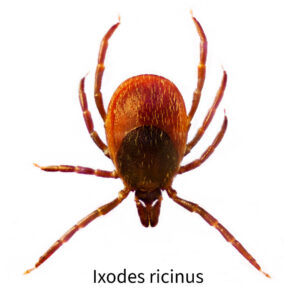Understanding Tick Hazards in South Downs National Park
Share article:
Article by:
Laura McMahon, Marketing Manager, British Deer Society
Understanding Tick Hazards in South Downs National Park: New Research Insights
The British Deer Society is excited to share the findings of a groundbreaking research project we supported, aimed at understanding tick hazards in South Downs National Park (SDNP). As the UK’s most visited national park, SDNP attracts countless visitors every year, making the management of tick-borne diseases a critical public health concern.
Background
Tick-borne diseases, including Lyme disease, have been on the rise in the UK. In recent years, the first presumed autochthonous cases of tick-borne encephalitis and babesiosis have been recorded. The SDNP is a prime location for wildlife conservation and recreation, necessitating interventions to protect public health, without disrupting the ecosystem.
Research Methods
The research team, including Jo Middleton, Ian Cooper, and Anja S. Rott, focused on several key areas:
- Sample Collection: BDS members collected ticks from deer across various locations.
- Transect Sampling: key potential intervention sites were identified and drag-sampled using six 50 m² transects, twice a year, over a two-year period.
- Lab Analysis: ticks were identified by species, sex, and life stage. Hazard levels were measured based on tick presence and density, including density of all life stages (DOT) and nymphs (DON).

Key Findings
- Tick Species and Distribution:
- Ixodes ricinus was the most common species identified.
- Haemaphysalis punctata showed concerning range expansion.
- Ixodes hexagonus and Dermacentor reticulatus were also found, but less frequently.
- High-Risk Areas:
- Key sites with significant tick presence included The Mens; Queen Elizabeth Country Park (QECP); Cowdray Estate (CE); Seven Sisters Country Park (SSCP) and Ditchling Beacon Nature Reserve (DBNR).
- Woodland areas posed a greater hazard compared to downland sites, but ticks were present in all habitats.
- Seasonal Patterns:
- Nymphs were most prevalent in spring, while larvae peaked in late summer and early autumn.
Implications and Recommendations
Based on these findings, the research team has made several important recommendations:
- Targeted Management: focus on small, heavily visited high-hazard plots like QECP for interventions.
- Precautionary Signage: install post-visit precautionary signs at all key locations to inform visitors about tick hazards.
- Protective Measures: encourage the use of repellent-impregnated clothing for deerstalkers to reduce tick bites.
- Ecological Research: conduct further studies at The Mens to understand the ecological dynamics of tick-borne infections and explore predator re-introduction/protection as a public health intervention.

Funding and Acknowledgements
This vital research was made possible through the generous funding from multiple organisations:
- The British Deer Society
- Nineveh Charitable Trust
- British Ecological Society
- Royal Society of Biology
- Robert Beevers Memorial Fund
The research team also expressed their gratitude for the methodological input from the chief scientific advisor of the British Deer Society, which they found instrumental in engaging deerstalker members as citizen scientists for tick collection.
Conclusion
This research highlights the widespread distribution of tick hazards across the SDNP, with Ixodes ricinus being the most prevalent species. The apparent expansion of Haemaphysalis punctata’s range is particularly concerning and warrants further investigation.
The SDNP Authority is ideally placed to champion policies that reduce tick hazards, while balancing public health and ecosystem health. With targeted interventions and continued research, visitors and wildlife can be both protected and nurtured in the national park.
Visitors and stakeholders should stay informed and take necessary precautions when enjoying the natural beauty of the South Downs National Park.
Click here for more detailed insights, read the full study and peer reviews
—
References
– Middleton, J., Cooper, I., & Rott, A. S. (2024). Tick hazard in the South Downs National Park (UK): species, distribution, key locations for future interventions, site density, habitats. Ecology, Parasitology, Infectious Diseases, Public Health, Environmental Health.
—
Stay safe and enjoy your time in nature!
Join Us in Our Mission
Support our ongoing research by becoming a member of the British Deer Society. Your membership helps fund critical research projects like this one, ensuring we can continue to protect both public health and our deer populations.
If you’re passionate about science and deer, please consider making a donation to support our research. Every contribution, no matter how small, makes a significant impact.











